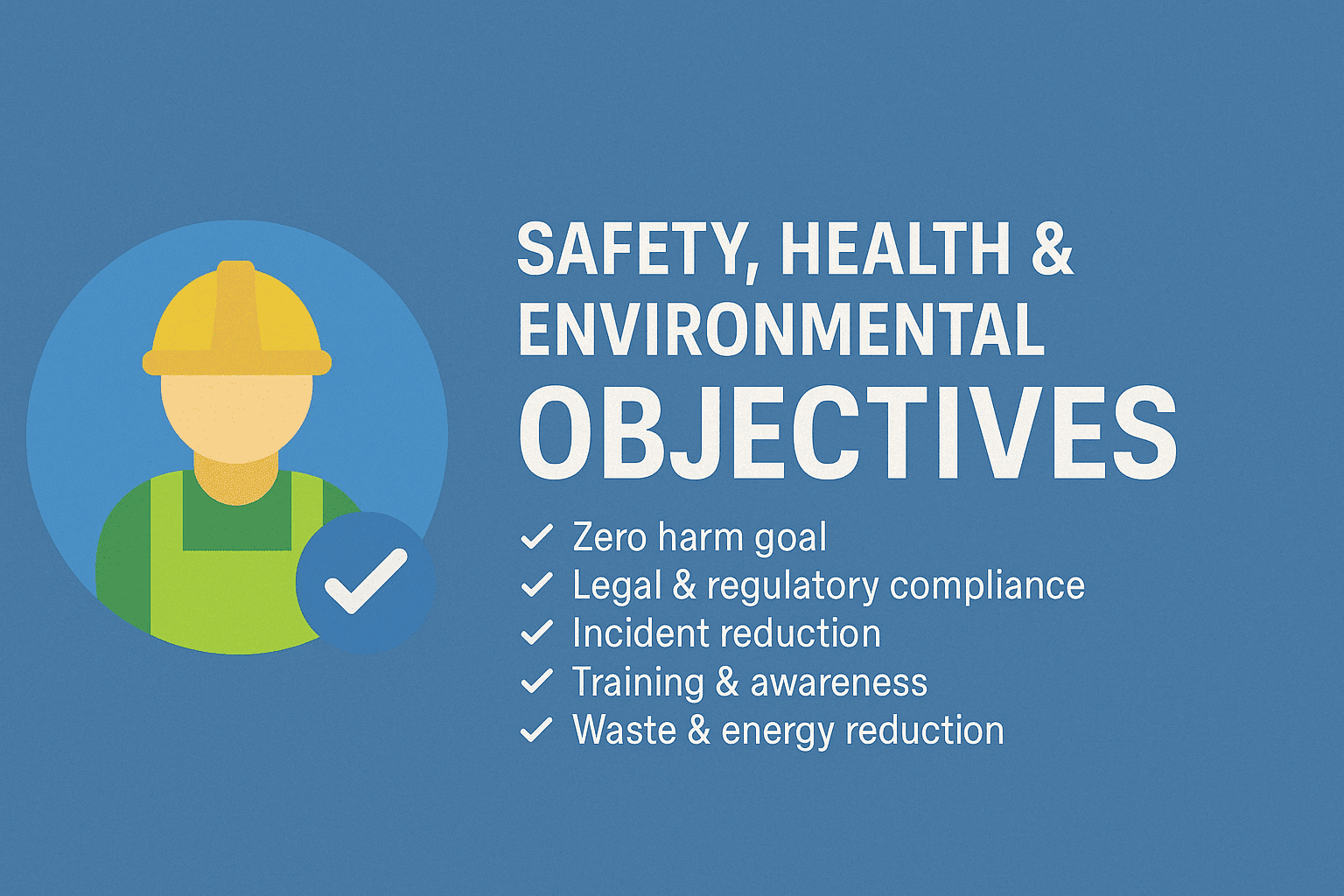
Safety, Health & Environmental (HSE) Objectives are measurable targets set by organizations to improve their HSE performance and ensure compliance with legal, organizational, and societal expectations. These objectives guide the implementation of HSE policies and continuous improvement programs.
✅ Standard HSE Objectives (Aligned with ISO 45001 & ISO 14001)
Zero Harm Goal
Achieve zero fatalities and reduce recordable injuries to the lowest practicable level.
Legal & Regulatory Compliance
Ensure 100% compliance with applicable HSE laws, regulations, and statutory requirements.
Incident Reduction
Reduce Lost Time Injury Frequency Rate (LTIFR) and Total Recordable Incident Rate (TRIR) by a set percentage annually.
Training & Awareness
Conduct periodic HSE training and increase employee awareness (e.g., 100% workforce trained annually).
Hazard Identification & Risk Mitigation
Complete hazard identification and risk assessment (HIRA) for all operational areas and implement control measures.
Emergency Preparedness
Conduct at least 2 emergency mock drills per year and ensure effective emergency response plans.
Waste Management & Pollution Control
Minimize waste generation, increase waste recycling by X%, and reduce emissions/discharges as per norms.
Energy Efficiency and Sustainability
Reduce energy and water consumption by a defined percentage annually.
Contractor Safety Management
Implement and monitor contractor safety performance with minimum safety score thresholds.
Behavior-Based Safety (BBS)
Conduct BBS observations and implement behavior-based safety culture improvement initiatives.
✅ How to Finalize HSE Objectives
Here’s a systematic 5-step approach to finalize HSE Objectives:
1. Understand Organizational Context
Review internal and external factors (legal, operational, environmental).
Consider stakeholder expectations (employees, regulators, clients, etc.).
2. Refer to HSE Policy & Risk Profile
Align objectives with the organization’s HSE policy commitments.
Focus on high-risk activities identified through HIRA or incident trends.
3. SMART Criteria
Ensure each objective is Specific, Measurable, Achievable, Relevant, and Time-bound.
4. Involve Key Stakeholders
Collaborate with department heads, safety committees, and management during finalization.
Consider input from HODs, site teams, and auditors.
5. Review & Approve
Present draft objectives to top management.
Finalize and communicate to all stakeholders.
Integrate into the annual HSE Plan, scorecards, or performance metrics.
✅ Example of SMART HSE Objective
| Objective | Measure | Target | Timeline |
|---|---|---|---|
| Reduce LTIFR | LTIFR Value | ≤ 0.5 | By March 2026 |
| Conduct Training | % of trained employees | 100% | Quarterly |
| Reduce Waste | Tonnes of waste | -10% vs previous year | Dec 2025 |
| Mock Drills | No. of drills | 2/site | Yearly |
